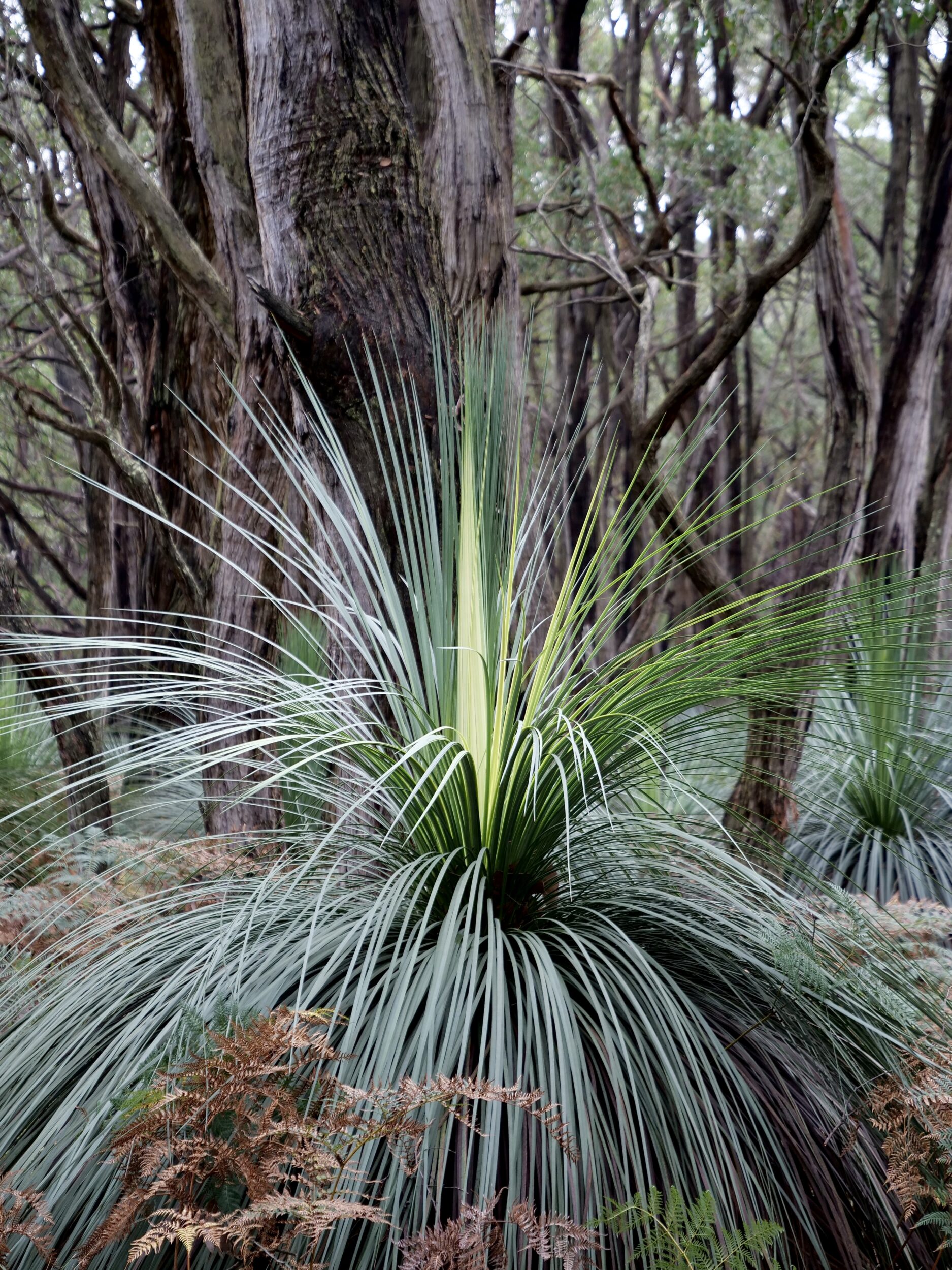I am sure that many who have walked In Deep Creek Conservation Park’s stringybark forest would agree that its grass “trees” are as striking as are its actual trees.
The former are examples of Xanthorrhoea australis, the most commonly seen & widely distributed of Australia’s Xanthorrhoea species.
All members of the “grass tree” genus are endemic to Australia; this one is found across a deal of southern Australia, including Tasmania.
It’s known as the “southern grass tree”. In South Australia it is commonly called “yakka”/ “yacca”, a word probably borrowed/mangled from its local indigenous name.
As was generally true of Xanthorrhoea species, many non-indigenous people used to call members of this one, “black boys”.
They grow very slowly, can live for centuries, are extremely hardy, and humans have derived/made many useful things from them – including weapons, food, drinks, lacquer and adhesives.
Xanthorrhoea are not merely able to survive fire; grass trees’ continued survival requires it.
Click here for a brief overview, in the context of Deep Creek Conservation Park.
Click this for more detailed and more general information on Xanthorrhoea australis.

Yakkka was once harvested and its residue used in explosives. My grandfather harvested it during the Great Depression on Kangaroo Island